Unclogging Your Sink Drain: A Comprehensive Guide


Intro
Unclogging a sink drain is a common household task that many homeowners face at some point. This issue can arise due to a variety of reasons such as food debris, grease buildup, or soap scum accumulation. Not only can clogs be annoying, but they can also lead to more serious plumbing issues if not addressed promptly and properly. This guide aims to provide practical methods and tools that can help anyone effectively resolve sink drainage problems.
As we navigate through this article, we will discuss essential equipment, identify the potential culprits behind clogs, outline step-by-step procedures for different clog removal techniques, and offer preventive measures to reduce the likelihood of future blockages. This information is crucial for homeowners and DIY enthusiasts who value both knowledge and efficiency in maintenance tasks.
Understanding Sink Blockages
Understanding sink blockages is crucial for anyone who encounters their sink draining slowly or not at all. It can save both time and money if you recognize the signs early and grasp the various causes behind clogs. This knowledge empowers homeowners to troubleshoot effectively and decide whether to employ DIY methods or seek professional help.
When we talk about sink blockages, it is essential to comprehend what’s contributing to the problem. Each clog can have unique causes, which may vary from household to household. Knowing these elements helps in identifying the most efficient methods for unclogging a drain. Additionally, it allows for better preventative practices to be established, ultimately leading to fewer occurrences of annoyances that arise due to a blocked sink.
Common Causes of Sink Clogs
Accumulation of Grease
Accumulation of grease can significantly contribute to sink blockages. Over time, even small amounts of cooking oil or fat can combine with other substances and harden in the pipes. This creates a solid mass that will block the flow of water. Grease often bridges gaps in the plumbing, attracting particles to it, forming larger clogs.
Such build-up is especially common in kitchen sinks where greasy substances are frequently washed down.
Food Particles
Food particles represent another common cause of sink clogs. Leftover bits of food can accumulate in pipes, especially if disposed of poorly. For instance, small scraps may not break down completely in a garbage disposal. When combined with water, these particles can form sticky masses. This contributes considerably to slow drainage and can initiate more serious clogs down the line. Ensuring proper disposal of food waste can help mitigate this issue.
Soap Residue
Soap residue can accumulate over time, particularly from bar soaps and detergents. This residue can stick to the inner walls of pipes, further narrowing them. The build-up creates a surface that captures other debris, leading to more severe clogs. This is particularly relevant in bathroom sinks where soap is often used. Regular maintenance can assist in breaking down these residues.
Hair and Other Debris
Hair and other debris can also quickly clog bathroom sinks. When washing hair or grooming, strands can fall into the sink and easily combine with soap residues and other particles. This blend creates clogs large enough to block the water flow entirely. Using sink strainers can assist in preventing hair and larger debris from accumulating in the first place. Though this may seem minor, it can lead to major issues if not managed promptly.
Signs of a Clogged Sink
Slow Drainage
Slow drainage is one of the initial indicators of a clogged sink. When water takes longer than usual to drain, it suggests a build-up somewhere in the plumbing. This could worsen if corrective measures are not taken soon. Note that slow drainage signals the need for inspection. Addressing this issue earlier can prevent more severe blockages.
Unpleasant Odors
Unpleasant odors often accompany a clogged sink. When food particles, grease, or other decomposition takes place in the pipes, it can result in foul smells. These odors can permeate the surrounding area. If left unaddressed, it could indicate a serious plumbing issue. It’s best to remedy the source to restore the freshness of your kitchen or bathroom.
Returning Water
Returning water is another significant sign of a blockage. If water gurgles back up through the sink after use, it suggests that the drain is not properly clearing. This occurs when air trapped in the plumbing cannot escape, resulting in reversed flow. It signifies that immediate action should be taken to assess the clog.
Gurgling Noises
Gurgling noises can act as an audible alert that something is amiss in your plumbing system. These sounds often occur when there is air trying to escape through the water. This bacteria production for creating blockage generates additional pressure that results in gurgling. Recognizing these noises can prompt timely checks of the sink and its drainage system.
Assessing the Severity of the Clog
Assessing the severity of a clog is crucial for developing a precise and effective strategy for unclogging your sink. Not all clogs are created equal; some are minor annoyances while others can indicate deeper plumbing issues. Assessing the severity allows homeowners or DIY enthusiasts to choose the right approach and tools for remediation.
By performing a thorough assessment, you can save time and resources. If a clog is trivial, simple methods like using a plunger may suffice. On the other hand, persistent or severe clogs might necessitate more advanced diagnostic tools or professional assistance. Understanding the severity also minimizes the risk of causing further damage by attempting inappropriate solutions.
Initial Observations
Initial observations play an important role in determining the best course of action. Look for visual signs of clogging, such as standing water in the sink. Observe how quickly the water drains—if it drains at all.
Common issues include:
- Visible Debris: Food particles, grease buildup, or hair might be noticeable in the drain.
- Water Levels: Standing water indicates a more severe blockage.
- Odors: Foul smells can be a sign of decaying matter in the pipes or stagnant water.
Note any unusual noises like gurgling, which can suggest that air is trapped in the drainage system. Coupled with water behavior, these observations create a clearer picture of the problem.
Using Diagnostic Tools
To effectively assess the severity of clogs, diagnostic tools can become essential allies. They provide insights into the nature and location of the blockage. Here are three tools that can be particularly useful:
Plumbing Snake
The plumbing snake, sometimes referred to as a drain snake, is designed to reach deep into pipes and remove obstructions. This tool is versatile and often a first option in unclogging techniques. Its key characteristic is its flexibility, allowing it to maneuver through bends in pipes.
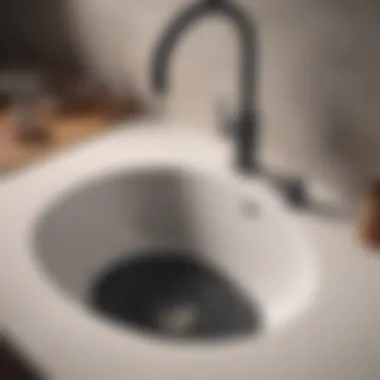
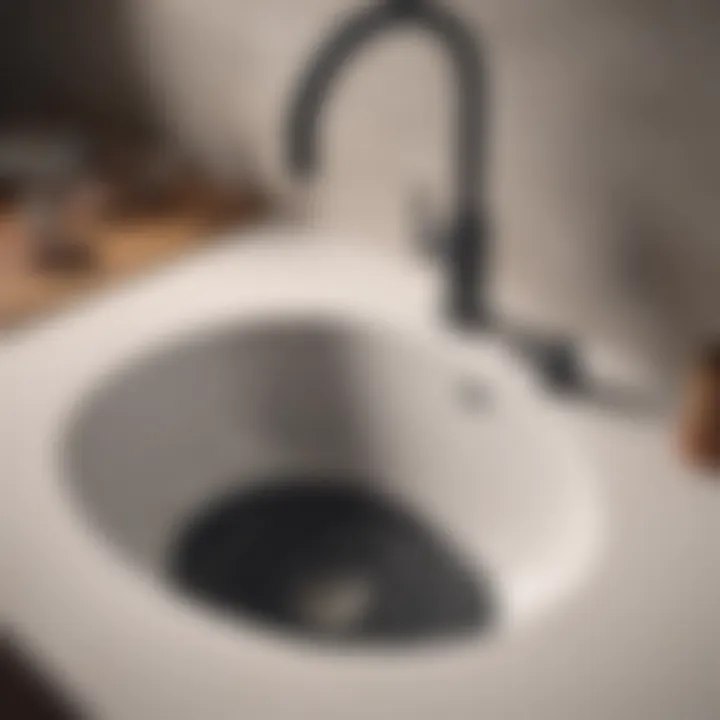
One major advantage of using a plumbing snake is it can clear stubborn clogs that typical plunging cannot. It’s effective for retrieving hair or solid debris stuck deep within the drain line. However, a plumbing snake requires some skill to use. Improper handling can lead to further damage, making the situation worse.
Drain Camera
A drain camera can provide a visual assessment of the internal condition of pipes. This feature offers a unique advantage. With a small camera attached to a flexible cable, homeowners can view the exact location and nature of the blockage.
This tool is particularly beneficial as it helps avoid guesswork. Knowing whether the clog is due to grease buildup, a foreign object, or pipe damage allows targeted interventions. The main disadvantage lies in the need for specific technical knowledge or the hiring of a professional to operate it.
Water Pressure Test
Water pressure tests measure the flow within your pipes, determining whether they have appropriate drainage capabilities. This method can reveal hidden issues like leaks or blockages affecting fixtures.
One key benefit of using a water pressure test is its non-invasive nature. It can help detect problems without the need for disassembly of the plumbing system. However, it may not pinpoint the exact location of a clog, necessitating follow-up with more precise tools.
Using these diagnostic tools effectively can considerably enhance the unblocking process, ensuring the right solution is applied based on the severity of the clog.
Tools Required for Unclogging
In tackling sink clogs effectively, having the right tools is crucial. The correct equipment can make the process more efficient and can often prevent the need for costly plumbing services. This section details the fundamental tools needed for unclogging, which can serve as a foundation for both beginners and seasoned DIY enthusiasts.
Basic Tools
Plunger
A plunger is one of the most commonly used tools for unclogging drains. It works by creating suction that can help dislodge clogs in the plumbing system. The key characteristic of a plunger is its rubber cup, which forms a seal over the drain opening. This seal allows for a strong push and pull effect.
The plunger is beneficial because it is simple to use and does not require any special skills. Its unique feature is that it can often clear minor clogs without the need for chemicals. However, it may not be as effective for more severe clogs or blockages deep within the plumbing.
Drain Snake
A drain snake, or plumbing snake, is a flexible auger used to remove more stubborn clogs. Its ability to reach deep into pipes makes it very useful. The key characteristic of a drain snake is its coiled metal design, which can navigate bends and curves in the plumbing.
This tool is a popular choice because it can effectively break through tough obstructions that a plunger cannot handle. Its unique feature allows it to reach much further into pipes. However, using a drain snake can be time-consuming and may require some physical effort.
Wrench
A wrench is another essential tool when it comes to unclogging sinks. It is primarily used to loosen plumbing fixtures and joints. The key characteristic of a wrench is its adjustable jaws, which grip various sizes of nuts and bolts.
This tool is beneficial in cases where you need to remove a trap or a section of pipe to access the clog directly. The unique feature of a wrench is its ability to provide leverage, making it easier to unscrew tightly sealed fittings. However, it can be challenging for a novice to use properly, and there is a risk of damaging pipes if used incorrectly.
Chemicals and Solutions
Enzymatic Cleaners
Enzymatic cleaners employ biological agents that help break down organic material in clogs. Their effectiveness lies in their natural composition, making them a safer alternative to harsh chemicals. The key characteristic of enzymatic cleaners is their ability to digest fats, oils, and other organic materials.
They are often favored due to their environmental friendliness and effectiveness over time. A unique feature is that they continue to work even after being flushed down the drain. However, they usually take longer to show results compared to other cleaning methods.
Baking Soda and Vinegar
Baking soda and vinegar create a chemical reaction that can help dissolve clogs. This combination is popular due to its simplicity and low cost. The key characteristic of this method is its effectiveness against minor blockages.
The unique feature is that it is readily available at home and does not involve harmful chemicals. However, it might not be effective for serious clogs and requires multiple applications in some cases.
Commercial Drain Cleaners
Commercial drain cleaners are chemical solutions designed to break down clogs quickly. The key characteristic is their strong formulation, which can clear tough blockages in a short amount of time. This makes them a commonly used option for many households.
Their unique feature is their ease of use, often requiring just a pour-and-wait approach. However, they can be caustic and pose risks to plumbing if used improperly. They are also less favorable for the environment compared to natural methods.
Important note: Always follow the instructions on chemical products to prevent damage to your plumbing or personal injury.
Step-by-Step Unclogging Techniques
The step-by-step approach to unclogging a sink drain is vital for ensuring effective problem resolution. Simple actions taken in a logical sequence can yield significant results, saving time and minimizing frustration. It allows homeowners to address the issue independently, fostering a sense of accomplishment. Climbing the learning curve for unclogging techniques can also lead to cost savings, avoiding the need for professional services in minor situations. This section outlines various methods, focusing on practical implementation.
Using a Plunger
Preparing the Area
Preparing the area is an essential first step to using a plunger effectively. Start by clearing the surrounding space of any items that might obstruct your movements or get wet. This will also allow for ease of use and accessibility. The key characteristic of this step is organization, which ensures that you can focus fully on the task at hand. Safe handling of the plunger while wielding it can lead to more efficient unclogging, as you can apply the necessary force without distractions. A clean area also avoids potential messes that can occur during the unclogging process.
Applying the Plunger
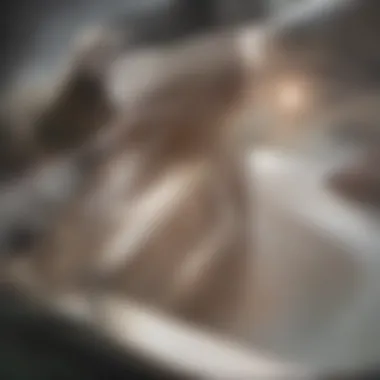
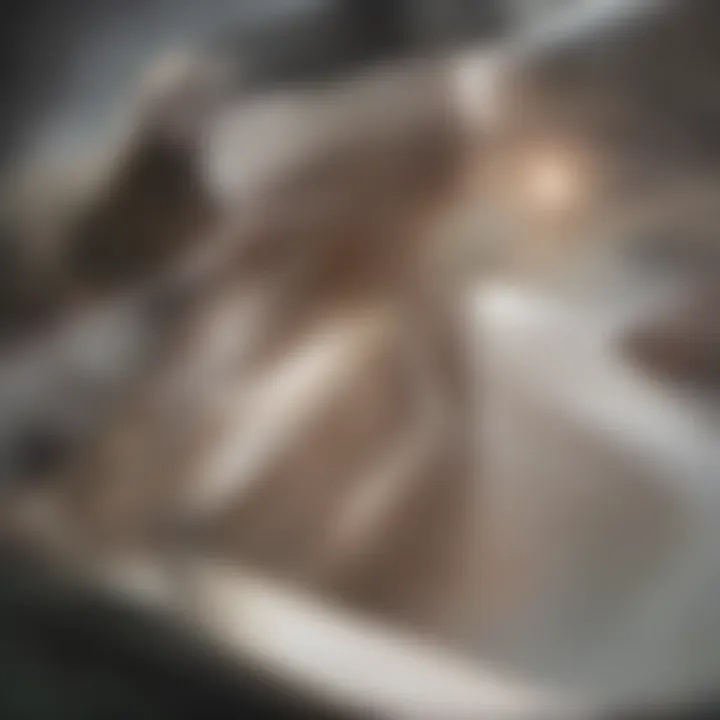
Once the area is prepared, the next phase is applying the plunger correctly. Position the plunger over the sink’s drain opening, ensuring a snug seal. This action is crucial, as it creates the vacuum needed to dislodge clogs effectively. The ability of the plunger to generate suction depends heavily on this seal. Its straightforwardness makes it a popular choice among DIY enthusiasts. However, ensure to maintain consistent pressure while pumping the plunger up and down to maximize the effectiveness.
Testing for Results
After several vigorous plunging motions, it’s necessary to test for results. Remove the plunger and observe if the water drains properly. This step identifies if the clog has been effectively cleared. The key trait of this phase is attentiveness, as it helps in quickly assessing the situation. If the water drains smoothly, you likely achieved success. If not, further methods may need to be employed. This assessment saves time by determining whether to continue with the current method or explore others.
Employing a Drain Snake
Feeding the Snake
Feeding the drain snake into the clogged drain can be an effective means of removing persistent clogs. Start by slowly inserting the snake into the drain opening until you feel resistance, which indicates you’ve reached the clog. The crucial aspect of this step is patience; rushing can potentially lead to breaks or damage. A drain snake’s flexibility is its key feature, allowing it to navigate through pipes effectively. However, using it requires care to avoid causing further blockage if mishandled.
Removing Clogs
Once the snake is fed into the drain, the next task is removing the clogs. Rotate the handle of the snake gently while applying slight pressure. This method engages with the blockage and can pull debris back up into the drain. The primary advantage of this technique is its ability to tackle stubborn clogs that plungers may not dislodge. However, ensure to use the snake carefully to avoid damaging plumbing.
Cleaning the Snake
After successful removal of clogs, cleaning the snake becomes necessary for future use. After extracting any debris clumped onto the snake, rinse it thoroughly with water. The main characteristic of this step is hygiene, ensuring that no residues remain on the tool. Keeping the snake clean enhances its performance on subsequent jobs. Neglecting this process may lead to odors and bacteria, undermining its effectiveness.
Chemical Methods
Using Baking Soda and Vinegar
Using baking soda and vinegar is a safe and environmentally-friendly method of dealing with clogs. First, pour half a cup of baking soda directly into the drain, followed by half a cup of vinegar. The reaction creates bubbles that can help dislodge blockages. The charm of this choice lies in its common household ingredients, reducing the need for harsher chemicals. This method can be very beneficial for basic clogs; however, it may not work for severe blockages, necessitating a backup plan.
Applying Drain Cleaners Safely
When using commercial drain cleaners, safety is a priority. Always read the instructions carefully before application. Wearing gloves and ensuring adequate ventilation is important, as the chemicals can be harsh. The key benefit of using specialized drain cleaners is their efficiency; they are formulated to tackle tough clogs. Bear in mind that improper handling may lead to serious accidents or damage to pipes, so exercise great caution.
Post-Cleaning Precautions
After applying any chemical methods, post-cleaning precautions cannot be overlooked. Rinse the drain thoroughly with water, ensuring that any remaining chemicals are flushed away. The primary aim of this step is to avoid buildup and potential harm to plumbing systems. Regular checks and maintenance of the drain can prevent future issues. Disregarding these precautions may lead to recurring clogs or unsafe plumbing conditions.
It’s essential to test the efficacy of your chosen unclogging method and ensure thorough follow-up to prevent future issues. A well-maintained drain saves time and effort down the line.
Addressing Persistent Clogs
Dealing with persistent sink clogs can be both frustrating and time-consuming. Understanding how to address these situations effectively is essential for maintaining a functional sink. Clogs that do not respond to typical methods may indicate a deeper underlying issue. Therefore, timely and informed action is crucial.
Persistent clogs often suggest that frequent blockages can occur, leading to water pooling and potential damage to your plumbing system. Recognizing when to escalate your efforts and consider professional help can save time and money. Evaluating the severity of the blockage is critical as prolonged neglect not only exacerbates the clog but may also cause secondary issues in other parts of your plumbing.
When to Call a Professional
Sometimes, despite your best efforts, a clog remains stubbornly in place. Knowing when to call a plumber becomes key to preventing further damage. If you encounter the following scenarios, it's wise to seek professional assistance:
- Continuous Clogs: If the same drain clogs repeatedly despite your interventions, this may signal a more serious issue in the plumbing pipes.
- Multiple Drains Affected: When multiple sinks or drains start to back up simultaneously, it suggests problems deeper in the system.
- Unpleasant Odors: Foul smells emanating from your drains can indicate stagnant water or unraveling waste.
- Visible Pipe Damage: If your pipes are showing signs of age or wear, it might be a sign to consult a professional.
A plumber possesses the specialized tools and expertise to handle complex problems, ensuring that the plumbing is both clean and properly functioning.
Potential Root Canal Issues
When dealing with persistent sink clogs, you might also face underlying issues connected to your home’s plumbing infrastructure. One potential complication is root infiltration, where tree roots breach plumbing lines seeking moisture. This condition can lead to:
- Serious Blockages: Roots can cause significant blockages that simple home remedies will not resolve.
- Pipe Damage: Roots can slowly or rapidly damage plumbing materials, requiring costly repairs.
- Waste Backflow: If roots penetrate the pipes, they can cause waste to back up into your home, which poses a health hazard.
Preventing root-related clogs involves regular inspections and, if necessary, installation of root barriers. If you suspect root involvement, consult a professional plumber who can assess and address any potential problems.
Key Insight: Persistent sink clogs should not be taken lightly. Understanding the severity of the issue and knowing when to call a professional can save you from larger headaches in plumbing maintenance.
Preventative Measures for Clogs
Understanding how to prevent sink clogs is essential to maintaining efficient household plumbing. Regular maintenance not only saves time and effort but also minimizes the need for costly repairs. Implementing preventative measures helps in recognizing potential issues before they escalate into severe clogs. Taking proactive steps extends the lifespan of your plumbing and contributes to a healthier living environment. Here, we will examine effective strategies for preventing sink blockages.
Routine Maintenance Tips
Regularly Cleaning Drains
Regular cleaning of drains is a crucial practice that plays a significant role in preventing clogs. This method directly removes buildup in the pipes, such as hair, food particles, and grease, which can lead to blockages. The key characteristic of this approach is its simplicity; a short monthly drain cleaning can effectively stave off more severe issues.
One unique feature of regularly cleaning drains is that it allows homeowners to keep an eye on any potential buildup. *This practice can be as simple as flushing hot water down the drain or using a mixture of baking soda and vinegar to break down organic matter.* This preventative action not only prevents clogs but also helps maintain a healthy sink environment.
Advantages:
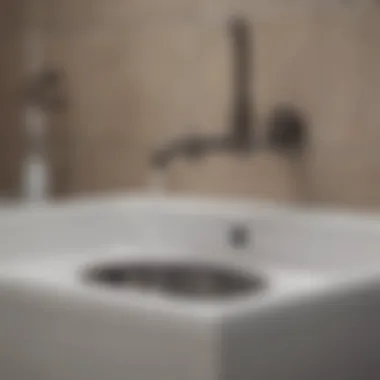
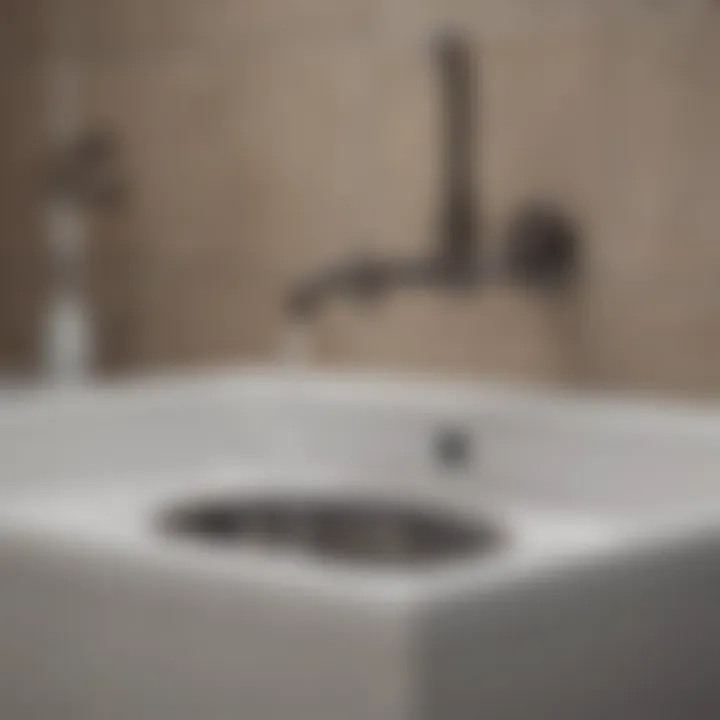
- Reduces the chances of severe blockages.
- Simple and cost-effective.
- Keeps unpleasant odors at bay.
Disadvantages:
- Requires regular commitment; often overlooked in busy households.
Implementing Strainers
Using strainers is an effective and straightforward strategy to prevent debris from entering the drain. Strainers collect hair, food particles, and other solid wastes before they can cause trouble. The primary characteristic of strainers is their practicality; they can be easily fitted over the drain.
The unique feature here is that strainers act as a barrier, stopping clogs before they can develop. *By simply emptying the strainer regularly, maintenance becomes a less daunting task.* This approach is popular as it requires little effort and has a high return on investment in terms of plumbing health.
Advantages:
- Inexpensive and easy to install.
- Highly effective in blocking debris.
- Minimal maintenance needed.
Disadvantages:
- Needs regular emptying to be effective; some may forget to do this.
Proper Disposal Practices
Understanding proper disposal practices is vital in preventing clogs. This involves being mindful of what is thrown down the sink. The key characteristic here is awareness; for instance, food scraps, grease, and non-biodegradable items should never be disposed of in sinks.
One unique aspect of proper disposal is how it encourages better habits in the kitchen and bathroom. *Adopting this mindset can prevent larger issues down the line, as improperly discarded materials can lead to impenetrable blockages.* This practice not only aids in personal plumbing but is also good for the environment.
Advantages:
- Reduces the likelihood of clogs significantly.
- Encourages responsible waste management.
- Saves money on plumbing repairs.
Disadvantages:
- Requires effort to change long-standing habits.
Lifestyle Changes
In addition to routine maintenance, making changes to everyday habits can significantly impact how often clogs occur. Small lifestyle adjustments can have long-term benefits.
Mindful Eating Habits
Being mindful about what goes down the sink during meal preparation can prevent many clogs. This aspect highlights the importance of considering waste disposal beforehand. For example, being aware that certain foods can cause blockages makes it easier to choose appropriate disposal methods.
The unique feature of mindful eating habits is the potential to create new patterns. *By consciously avoiding disposing of certain foods down the drain, you naturally reduce the risk of clogs.* This change is a beneficial recommendation for anyone seeking to maintain effective plumbing.
Advantages:
- Directly decreases the volume of waste entering the sink.
- Can improve overall kitchen cleanliness.
Disadvantages:
- Requires increased awareness during meal preparation; sometimes challenging.
Disposing of Grease
Proper disposal of grease is crucial in maintaining clear drains. The specific element here involves utilizing suitable containers for grease disposal, rather than washing it down the sink where it can solidify and trap other debris. The key characteristic is awareness of how grease behaves when cooled.
The unique aspect of disposing of grease responsibly is the knowledge that what may seem easy can lead to frustrating situations later on. *Using jars or containers to store grease until it can be properly discarded is an effective solution.* This preventative method very much contributes to maintaining free-flowing drains.
Advantages:
- Eliminates a significant source of clog potential.
- Cost-effective solution since it avoids repair costs.
Disadvantages:
- Requires effort to establish new habits and methods of disposal.
Limiting Hair in Sinks
Taking steps to limit hair from going down sinks is a simple yet effective method to avoid blockages. The specific aspect here involves both preventative measures and behavioral changes. One key characteristic is the use of traps or screens to catch hair before it can enter the drain.
The unique feature is the combination of awareness and equipment. *By making sure to remove hair regularly from sink surfaces and using traps, you can dramatically reduce the chances of hair-related clogs.* This practice is beneficial as it tackles a common source of blockages directly.
Advantages:
- Easy to implement in daily routines.
- Reduces clogs significantly in bathrooms or kitchens.
Disadvantages:
- Some effort required to keep sinks clean and clear of hair.







